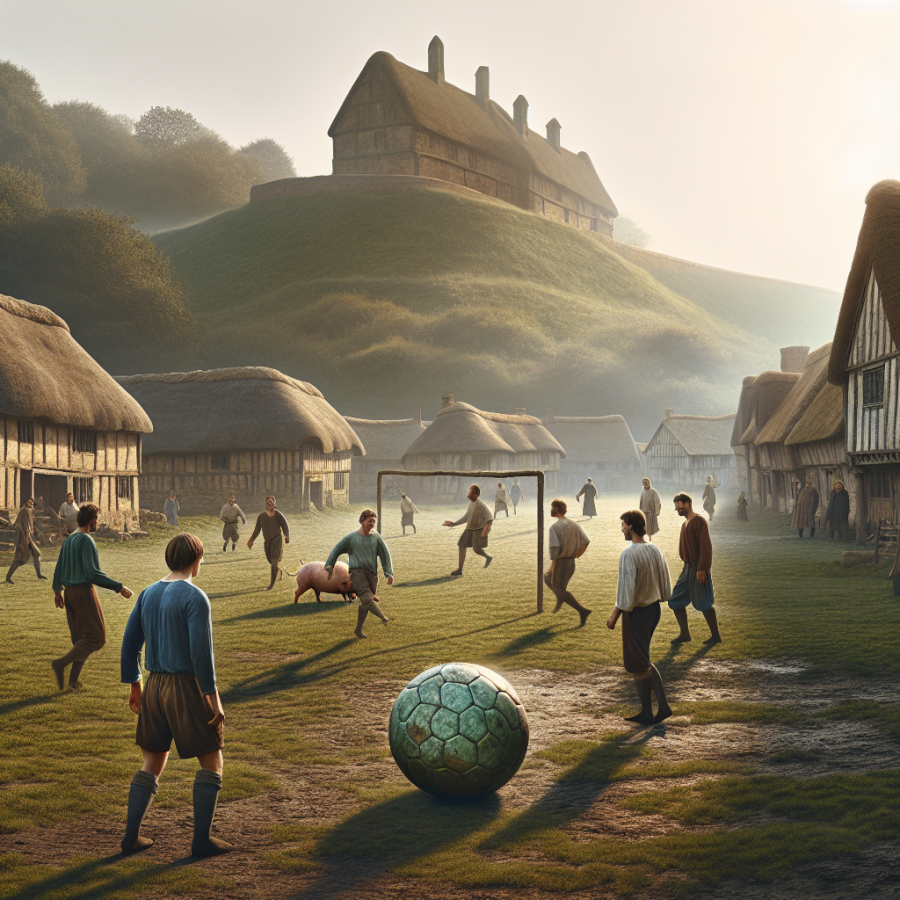From Ancient Customs to Iconic Championships: The Evolution of Soccer
The roots of soccer, widely recognized as the beautiful game, can be traced back to ancient times. In China, during the 2nd and 3rd centuries BC, a game known as Tsu' Chu, which means kicking ball, was popular. This game involved kicking a ball made of leather filled with feathers and hair through an opening, around 30 to 40 cm wide, into a small net fixed onto long bamboo canes. Soldiers often used this game as their training routine to stay fit and strong.
Around the same time, a similar sport was taking shape in ancient Greece. This game, known as Episkyros, involved passing the ball to one another by hand, but with the primary aim of not letting it fall onto the ground. Later, the Romans adopted Episkyros and made it more of an aggressive game, naming it Harpastum. It is believed that both the Greek and Roman versions of the game influenced the origins of soccer.
Centuries later, during the Dark Ages, variations of soccer started gaining popularity in England. However, these games had little in common with the modern game. They were extremely violent, and it was common for players to get injured. Eventually, soccer-style games began to spread across Europe and, in the process, became more refined and less violent.
The 19th century marked a significant point in the evolution of soccer. In 1863, the London Football Association finalized a set of rules that came to be known as "Association Football". This version distanced itself from the rough and unregulated forms of the sport, prohibiting tripping opponents and touching the ball with hands. This is the same version that is recognized as modern-day soccer.
The first Football Association Challenge Cup (FA Cup) was held in 1872, followed by the British Home Championship in 1884, marking the beginning of soccer competitions. Around the same time, professional leagues started to form in various countries, including the English Football League in 1888, which was the world's first professional football league.
The International Federation of Association Football, also known as FIFA, was established in 1904 and organized the inaugural international football match between Belgium and France. FIFA's establishment paved the way for the first World Cup tournament, held in 1930.
As the game continued to capture hearts worldwide, innovations and introductions to the game like offside rules, penalties, and yellow and red cards were witnessed.
Read also:
Behind the Scenes: Understanding the Distance Soccer Players Run in a Game
Unraveling the Timeline: Tracing Back the Birth of Soccer
Piecing together the history and origin of soccer isn't a straightforward task; it involves tracing back centuries of human history where forms of the game appear in various shapes and forms.
The consensus among historians is that forms of soccer, or football as it is referred to in most of the world, have existed for more than 2,000 years. Early versions of the game can be seen in civilizations across the globe, from the ancient Greeks and Romans to the early Chinese dynasties.
It was the Chinese Dynasties, particularly the Han Dynasty (206 BC-220 AD), where the earliest version of soccer is often traced back to. This game was called "cuju", which translates to "kick ball with foot". The game involved two teams attempting to score by kicking a ball into a small net, not dissimilar to today's soccer game. Cuju was highly popular and was even used as a training method for military soldiers.
However, while soccer-like games existed in ancient societies, the sport as we know it started to take shape in Medieval England. By the 8th century, various forms of football, some even allowing hands to be used, were popular in different parts of England. These early versions were often violent and chaotic, lacking the structured rules we associate with the modern game of soccer.
Fast forward to the 19th century England where football became increasingly popular in schools and universities. In 1848, the "Cambridge Rules" were established, marking a key point in soccer's history. This was the first set of rules to resemble the modern game, where hands were forbidden, a primitive offside rule was introduced.
However, it was the formation of The Football Association in England in 1863 that is generally acknowledged as the birth of modern soccer. The governing body set out rules and regulations that eventually brought a degree of unity and coherence to the sport. It was from these rules that the sport began to grow globally, with the first international match taking place between England and Scotland in 1872.
By the 20th Century, soccer had spread across the globe. The establishment of FIFA (Federation Internationale de Football Association) in 1904 has often been cited as a major step in formalizing soccer at an international level. Its establishment also marked the beginning of the World Cup in 1930.
Delving deeper into the origins of soccer exhibits a fascinating blend of history, culture, and sport.




